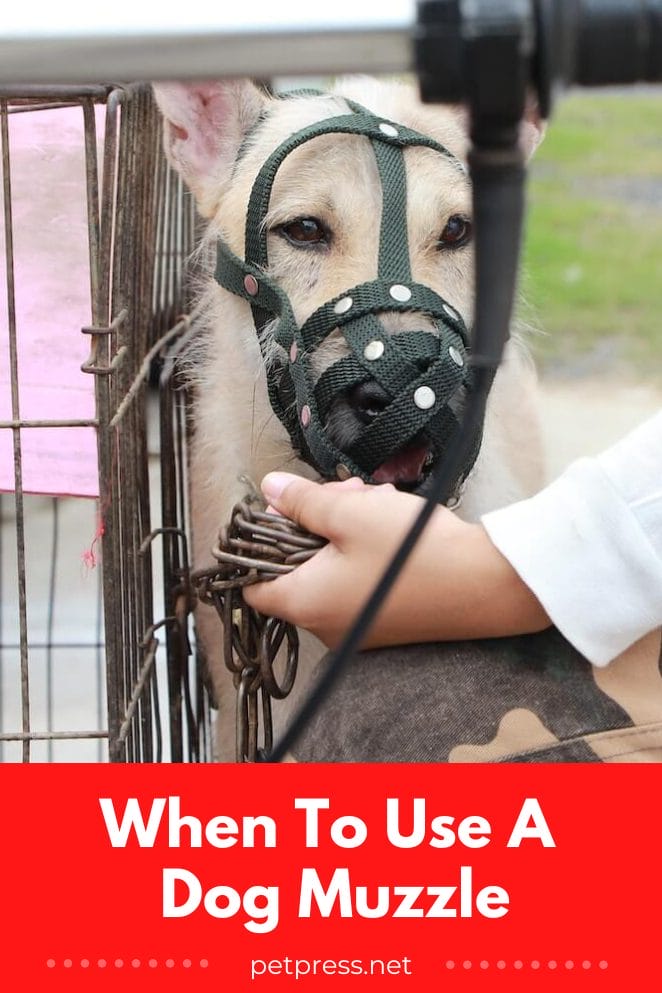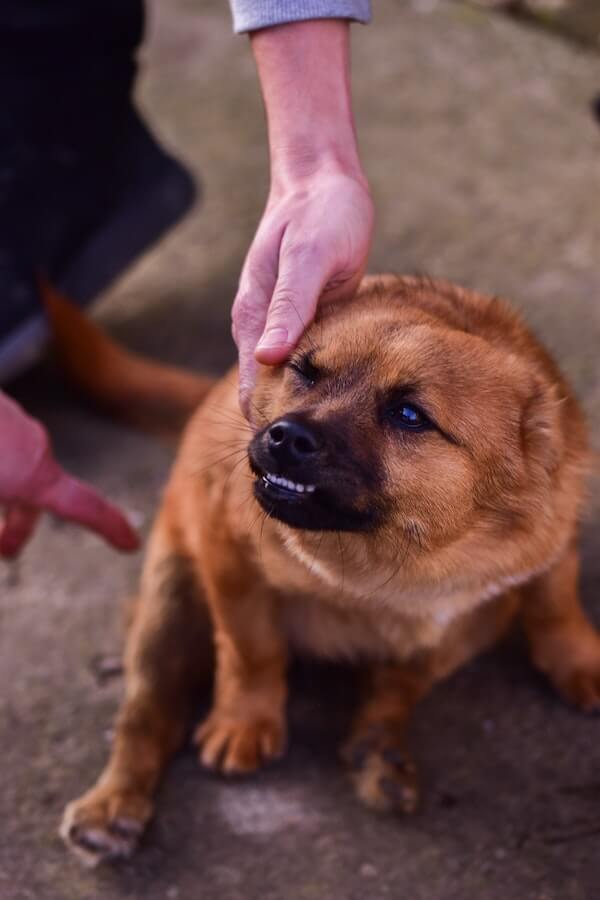
Ah, the dog muzzle: a misunderstood yet important tool when it comes to keeping both humans and canines safe. But, when to use a dog muzzle for your pup?
When it comes to dog muzzles, the thought may seem a bit off-putting. After all, why would you ever want to put something on your beloved pup’s face?
The truth is that sometimes a muzzle can be a necessary tool for safety and comfort. When used appropriately, muzzles have many benefits and should not be seen as a negative thing.
Muzzles are an important part of responsible pet ownership! So let’s understand when and why to use a dog muzzle properly.
When to use a dog muzzle on your pup

A dog muzzle is an important tool for any pet owner, and there are several different occasions when you should use one. Here we will discuss seven situations where a dog muzzle might be necessary:
1) When visiting the vet
When taking your pup to the veterinarian, it’s best to have them wear a muzzle.
Even if your dog is normally friendly and docile, it may become nervous or scared at the vet’s office and could bite out of fear or anxiety.
Having them wear a muzzle can help protect both the veterinarians and other pets in the waiting room.
2) When trimming nails or grooming
When dogs are getting their nails trimmed or being groomed, it’s important to have them wear a muzzle.
Even if your pup is usually relaxed when being groomed, they may flinch or move suddenly when the clippers come out, and this could lead to an accidental injury if their teeth are not protected.
3) When introducing new pets
When introducing a new pet into the home, it’s always a good idea to have both animals wear muzzles in order to prevent any potential fights from occurring.
This can help create a calm environment for both dogs and decrease the chances of either animal getting injured.
4) When walking around other people or animals
When taking your dog on walks or visits to the park, it’s smart to have them wear a muzzle in order to keep them away from other people or animals.
Muzzles can help prevent your pup from barking at strangers, running up to other dogs, or biting someone out of fear or excitement.
5) When participating in dog sports
When competing in organized dog sports such as agility, obedience, and flyball, it’s important that all dogs wear a muzzle so that no one gets hurt during the competition.
This will also help ensure that the sport is fair for everyone involved.
6) When dealing with food aggression
If your pet has aggressive behavior when it comes to food, then putting them in a muzzle before mealtime can be a preventative measure against any potential injuries.
Not only will this help protect you and other people in the house, but it can also help your pup to learn that meal times are not a time for aggression.
7) When protecting yourself from bites
Finally, if you ever find yourself in an uncomfortable situation with a strange or aggressive dog, having them wear a muzzle can be essential for protecting yourself from any potential bites.
Even if the dog seems friendly at first, it’s best to always err on the side of caution and have them muzzled before petting or interacting with them.
These are just some of the situations when using a dog muzzle is recommended. Wearing one can help keep both you and your pup safe in many different scenarios, so it’s always a good idea to have one handy.
How do you get a dog used to wearing a muzzle?

When considering when and how to use a dog muzzle, it’s important to use it responsibly and ensure that your pup gets used to wearing it. If you’re ready to take the plunge into muzzle training, here are some easy ways to get started!
1. Introduce gradually:
When first introducing your pup to their muzzle, start slowly so they can become familiar with its feel and presence.
Let them sniff the muzzle and give them treats while doing so until they associate it with positive reinforcement.
2. Practice without fastening:
When possible, let your pup wear the muzzle without fastening it in place to get them comfortable.
When they become less reactive, start fastening and unfastening it so that they become accustomed to the sensation.
3. Make it a positive experience:
When you can, try rewarding your pup for wearing their muzzle with treats or verbal cues of praise. Muzzle training your dog is very important so that they don’t fell intimidated. When they associate the muzzle with something positive, it will eventually become less intimidating.
4. Take frequent breaks:
When introducing your pup to wearing a muzzle, make sure to take frequent breaks so that they don’t become overwhelmed or stressed. You can also try taking short walks or playing games while wearing the muzzle.
Are muzzles traumatic for dogs?

The debate over whether or not muzzles are traumatic for dogs is a hot one. While it’s true that some dogs may find the unfamiliar sensation of wearing a muzzle uncomfortable. They don’t have to be traumatic.
Muzzling your dog can make him feel safe and secure in situations where he could feel threatened or become aggressive.
It’s important to remember that muzzles should not be used as a form of punishment. Instead, you should use them only when necessary – for example, when visiting the vet or groomer.
When using a muzzle on your dog, it’s essential to introduce it slowly and make sure that he is comfortable with it before taking him out into public places.
When he’s wearing the muzzle, provide him with plenty of positive reinforcement and treats so that he associates it with good things. It’s also important to make sure your dog is never left unattended while muzzled.
Overall, muzzles can be an effective tool. They can help protect your pup and those around him in social situations where aggression could be an issue.
Final thoughts
At the end of the day, muzzles can be a helpful tool in many different scenarios.
When used responsibly, they can help keep both you and your pup safe. When considering when and how to use a dog muzzle, it’s important to use it properly and ensure that your pup is comfortable wearing it.
With patience and positive reinforcement, you can get your pup used to the muzzle in no time!
- 7 Dog Breeds With Webbed Feet And Why Do They Have Them - July 19, 2023
- 10 Best Fish For Small Tanks That Make Perfect Pets - July 18, 2023
- How to Breed Guinea Pigs: A Detailed Guide - July 17, 2023


GIPHY App Key not set. Please check settings